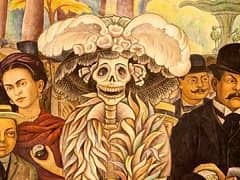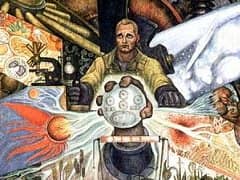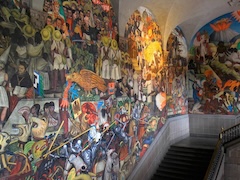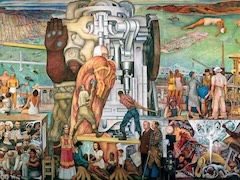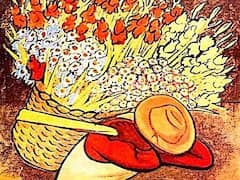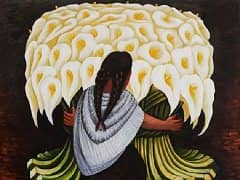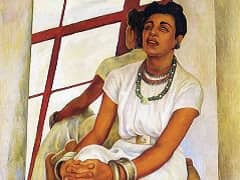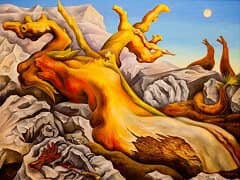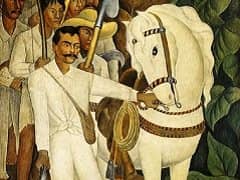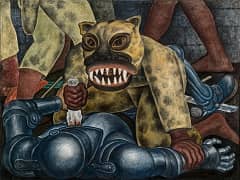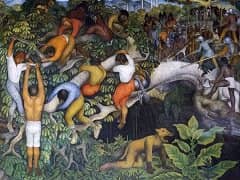Jacques Lipchitz, 1914 by Diego Rivera
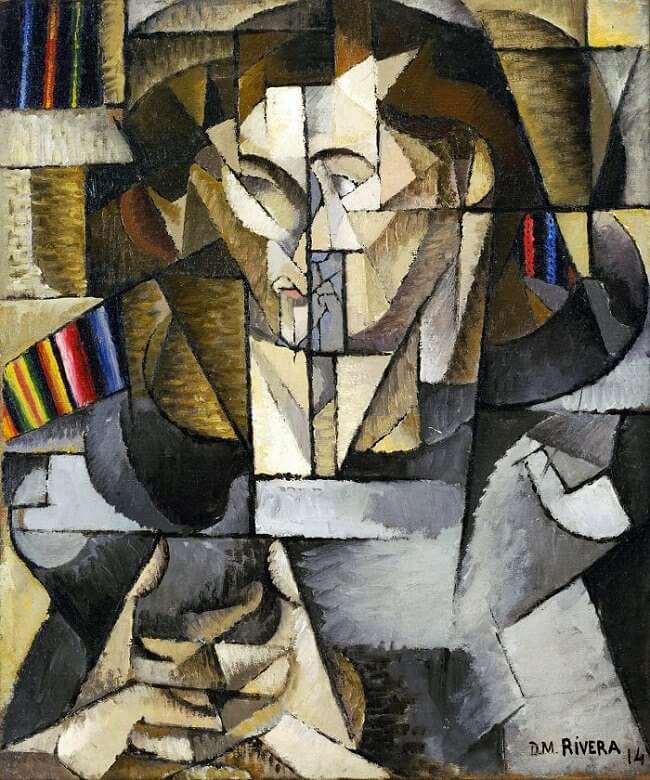
Rivera's relationship with Beloff, and her involvement with a circle of Russian anarchists, played a significant role in developing the artist's political and national consciousness. This burgeoning awareness was furthered by
the deteriorating political situation in both Europe and Mexico. Many of the symbolic objects Rivera included in paintings of that time have nationalistic overtones. Serapes, the woven blankets were worn by Mexican peasants, became
a hallmark of the artist's cubist paintings. They were employed to powerful effect in the 1914 portrait of sculptor Jacques Lipchitz, where their vivid patterns vitalize the composition and cloak his Lithuanian friend
in Rivera's Mexican identity. Yet Rivera often drew upon multiple references.
In this portrait, he looks not only to traditional Mexican art, but also to the European avant-garde. The otherwise near-monochromatic palette and
gridded compositional structure are profoundly redolent of work by Piet Mondrian, who had begun to include grid structures in his paintings of trees and other subjects. In deliberately quoting his neighbor's formal devices,
Rivera incorporates an evocative memento of their exchange of ideas and artistic experiences.

